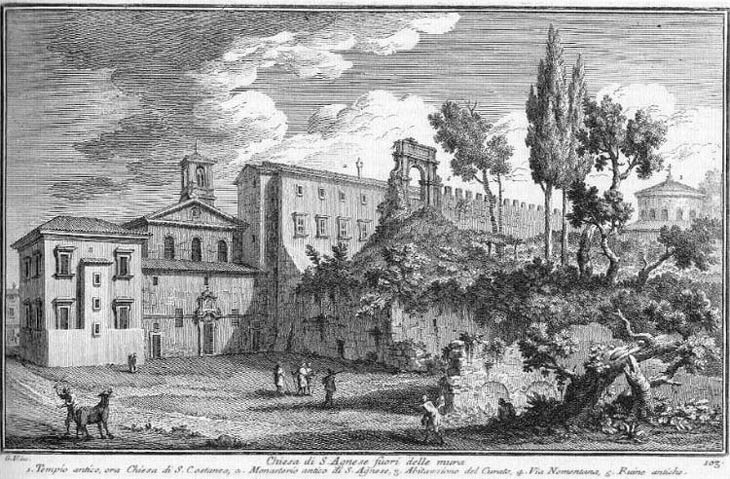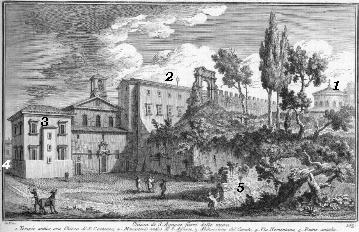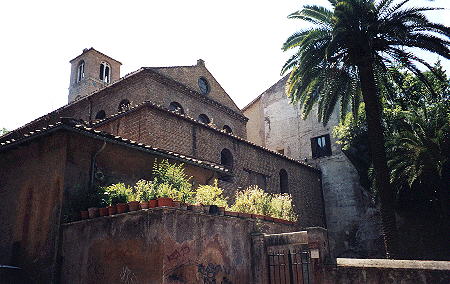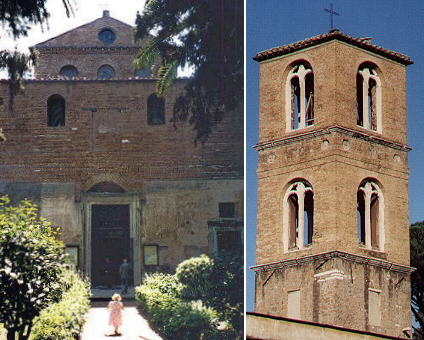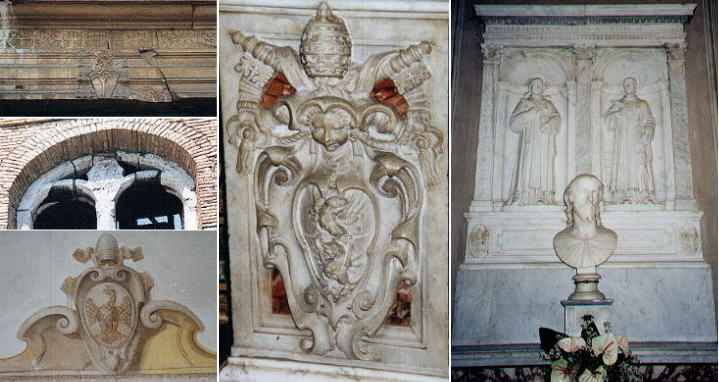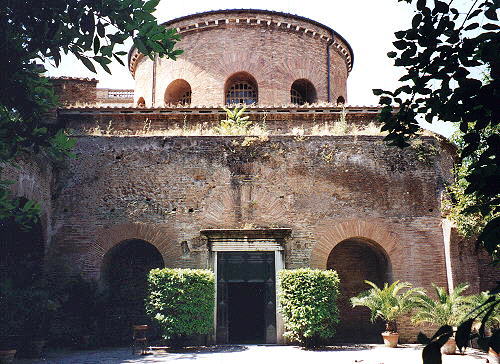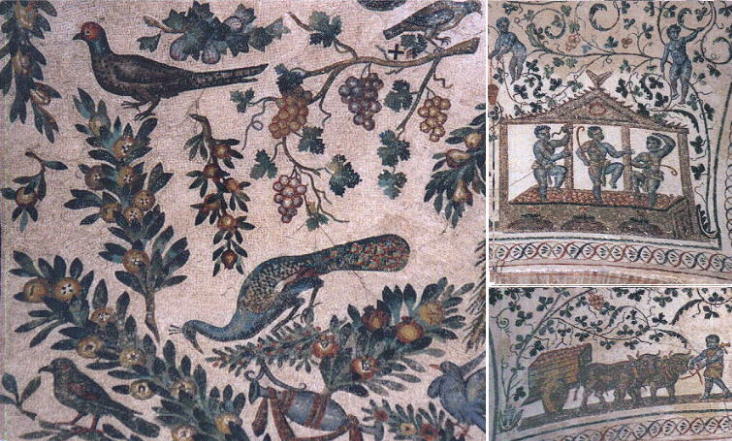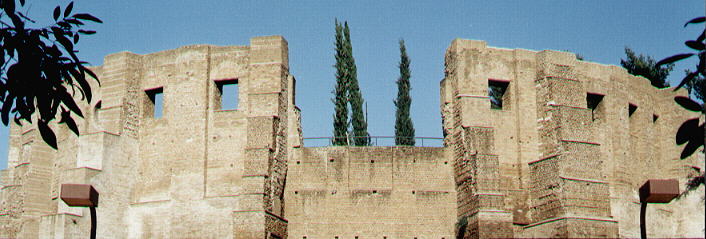  S. Agnese fuori delle Mura (Book 6) (Day 2) In this page:
S. Agnese, off Porta Pia, is said to have
been founded by Constantine, but more recent studies set its foundation in the VIIth century, while a high circular wall in the gardens
of S. Agnese is what is left of the Basilica erected at the time of Constantine. The plate shows also S. Costanza, originally
a monument built by Constantine for his daughter Costanza. In the description below the plate Vasi made reference to: 1) Old Temple now S. Costanza;
2) Monastero di S. Agnese; 3) Curate's house; 4) Via Nomentana; 5) Ancient walls.
The area around S. Agnese is today heavily built and it is no longer possible to have a view over both S. Agnese and S. Costanza.
The usual entrance to the church is not from the fašade but from a staircase the walls of which are covered with inscriptions and mosaics (see background) from the catacombs.
Cardinal Giuliano Della Rovere (who became Pope Julius II) in 1479 widely restored the old basilica which was almost ruined. His coat of arms can be seen at the entrance of the staircase leading to the church and on the bell tower. Paulus V built the altar under which is the tomb of Agnese and left a fine baroque coat of arms. In the staircase there is a painted coat of arms of Innocentius XIII. A bust of Jesus in the first chapel was for a long time attributed to Michelangelo; behind it the picture shows a relief by Andrea Bregno.
S. Costanza is today a much sought after wedding place. The elegant circular interior has vaults with late Roman mosaics, which although meant for a Christian building retain a pagan joy of life.
The basilica built by Constantine had an unusual elliptical shape and its western side, because of the sloping ground, was supported by thick and impressive walls (the only ones left). It was abandoned in the VIIth century in favour of the current church. Excerpts from Giuseppe Vasi 1761 Itinerary related to this page:
Next plate in Book 6: S. Maria a Trevi Next step in Day 2 itinerary: Palazzo Barberini
Go
to |
All images © 1999 - 2003 by Roberto Piperno. Write to romapip@quipo.it
